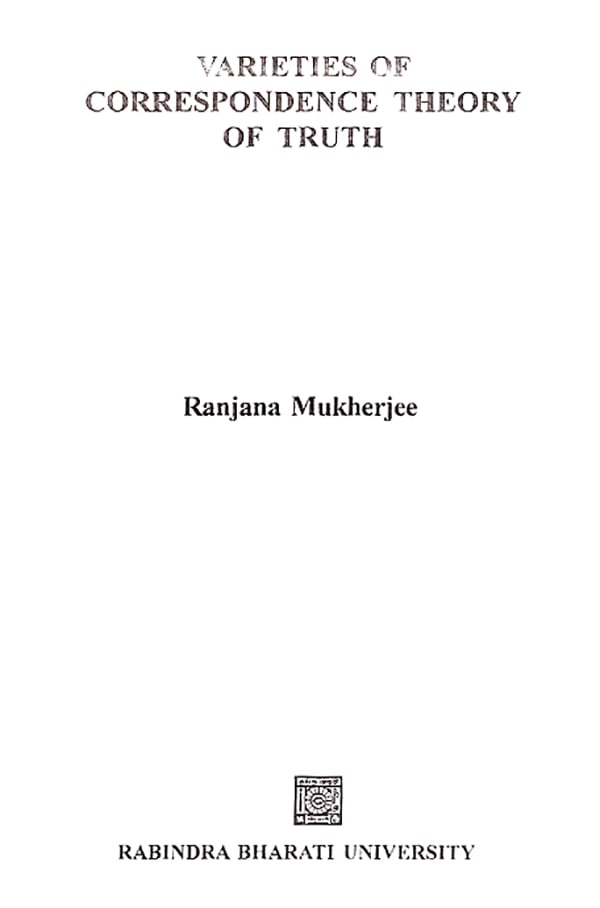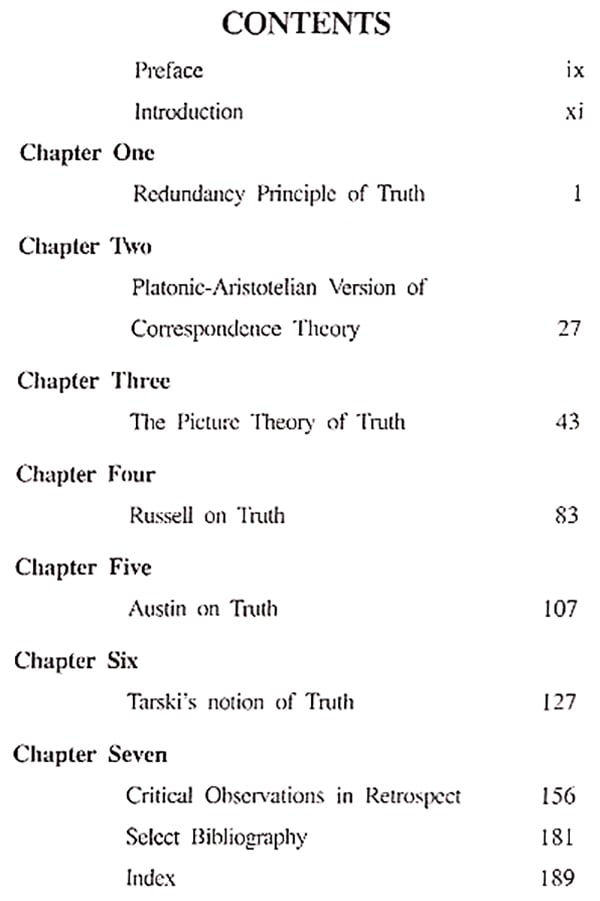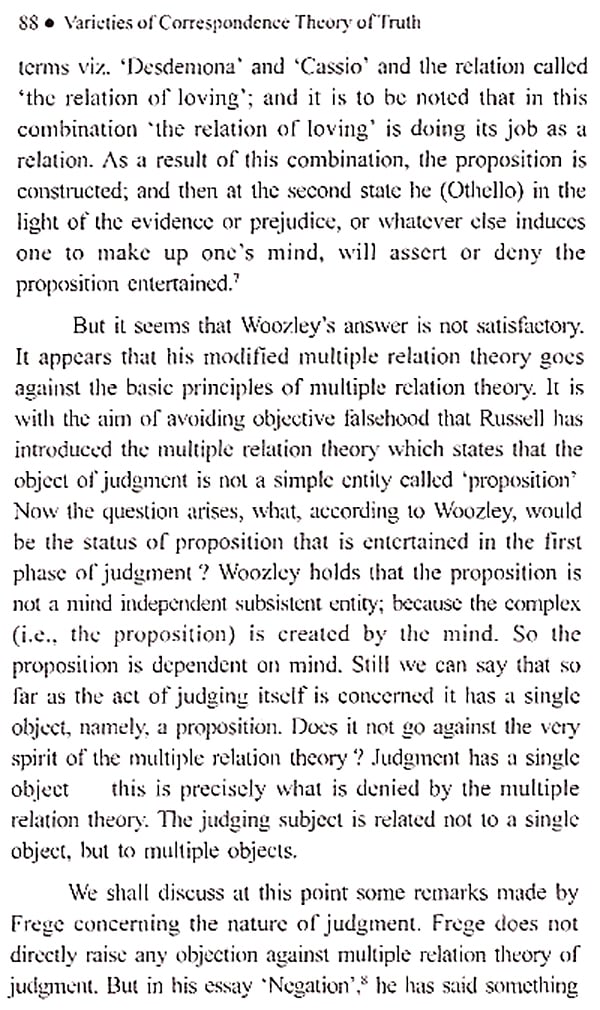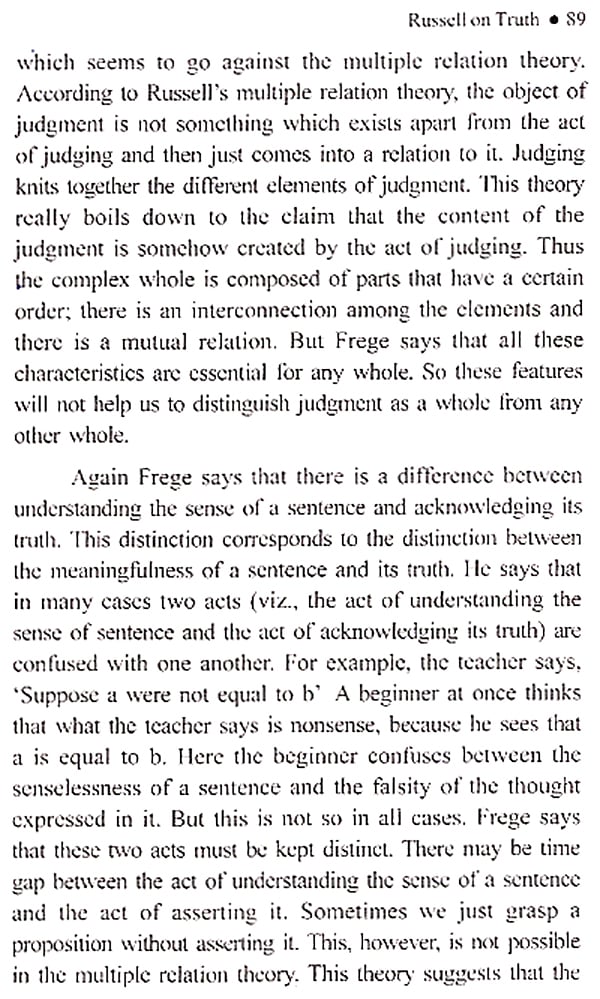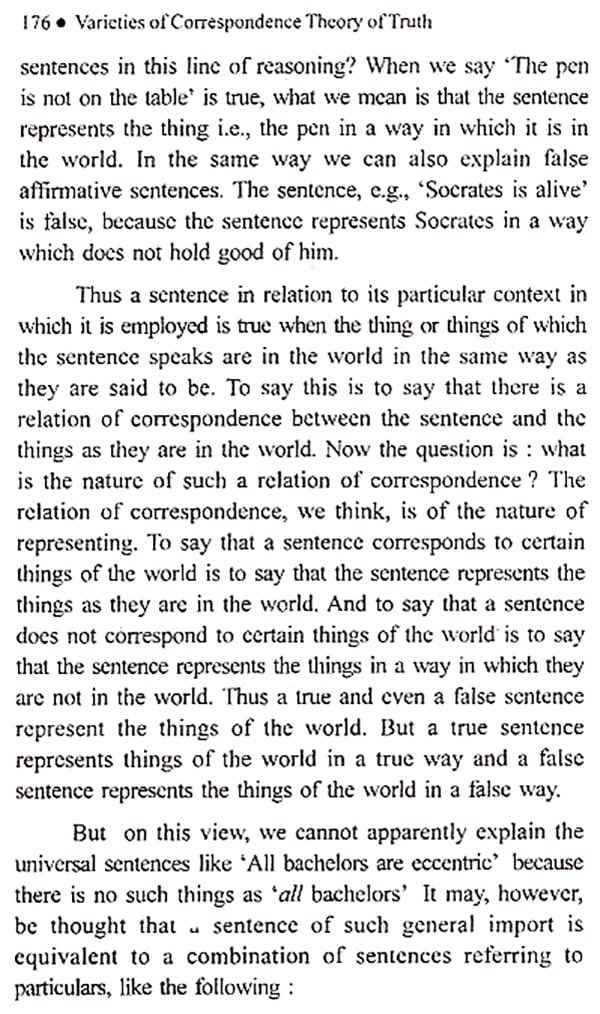
Varieties of Correspondence Theory of Truth
Book Specification
| Item Code: | NAX035 |
| Author: | Ranjana Mukherjee |
| Publisher: | Rabindra Bharati University, Kolkata |
| Language: | English |
| Edition: | 2013 |
| ISBN: | 9789382039099 |
| Pages: | 190 |
| Cover: | HARDCOVER |
| Other Details | 8.50 X 5.50 inch |
| Weight | 300 gm |
Book Description
The problem of truth is an age-old problem. Traditional theories of truth are the Correspondence. the Coherence and the Pragmatic ones. Without being strictly chronological the book aims at an explanation of the different varieties of Correspondence theory from Plato to Tarski. The Correspondence theory in all its versions involve three distinct elements (i) truth or falsity, (ii) thing or things in the world, and (iii) the relation which makes for truth or falsity. Each of these elements can be construed in different ways and these differences lead to different versions of correspondence. Through a nuanced presentation of the various versions the book attempts at a comprehensive account of correspondence.
This book is written primarily for those who are interested in traditional correspondence theory of truth. The expression ‘correspondence theory of truth’ is applicable to a number of theories having some common features. In this book I have tried to cover the different varieties of correspondence theory from Plato to Tarski.
The three traditionally known theories of truth are the correspondence, the coherence and the pragmatic theories. At the very outset. we should note that there is a distinction between the nature and the criterion of truth. The correspondence theory, as it has been presented by its proponents, would seem to be more a theory concerning the nature of truth than a theory concerning its criterion. I shall discuss in this book the correspondence theory mainly as a theory of the nature of truth.
There are different versions of this theory. Though the different versions differ from each other in many important details, yet they have certain general features in common. The more important general features are perhaps the following.
In every situation in which we talk of truth and falsity. we can make a sharp distinction between what is true or false and that which makes it either true or false. Truth or falsity consists in relation or lack of relation between these two things. And that which makes what is either true or false, is a thing or a number of things in the world. To put the matter in a simple form: the correspondence theory in all its versions involves three distinct elements, (i) truth or falsity (ii) thing or things in the world, and (iii) the relation which makes for truth or falsity. Each of these elements which are involved in correspondence theory can be construed in different ways and these differences would lead to different versions of correspondence theory.
The correspondence theory is, indeed, very old. Plato in the Sophist and Aristotle in the Metaphysics gave a version of correspondence. Ludwig Wittgenstein, Bertrand Russell, GE. Moore and J.L.. Austin also accepted the theory in some way or other, But the most interesting developments of the theory have, however, taken place in the twentieth century mainly in the hands of Tarski.
I have discussed some of their views in my book without trying to be chronological.
A very simple form of correspondence is as follows: a sentence or a statement or a proposition is true, when tt corresponds to a fact or an event or the things of the world: and it is false when it fails to do so. In regard to the first term of the relation of correspondence, some say it is a sentence, Whereas others suggest that it is a proposition: again there are still others who maintain that it is a statement. Similarly, as to the second term of the relation of correspondence, some suggest that it is a fact, whereas others maintain that it is an event. while there are some others who think it to be things. Now in regard to the relation of correspondence. same say that it is one of picturing: whereas Tarski says that this relation is one of satisfaction. Again Austin holds that the relation of correspondence is a conventional relation. All these call for some detailed consideration which is done in different chapters of the book.
The problem dealt with in this book is perhaps as old as philosophy itself. Innumerable treatises have been written on it. Comprehensive studies on this problem have also been made by recent philosophers. Naturally, the question arises, what is the need of restating the different varieties of correspondence theory as the definition of trulh? The answer is to offer a comprehensive idea about the different varieties of correspondence in a single book. Traditional and recent theories of truth have always attracted me and I have studied those theories will great interest. OF the three different traditional theories of truth I have devoted myself to the correspondence theory, because it seems to me (to be very near to our commonsense belief. When, for example. I say "The mother gave her child a chocolate bar on Christmas day" is true: ordinarily what I mean is hat the mother actually gave her child a chocolate bar on Christmas day. This is nothing but to show that what is said by the sentence is what has to be the case if the sentence is to be true. To mean this is to show the relation between language. on the one hand and something extra linguistic on the other. Thus when a sentence is true, then it is true because the things in the world are what they are said ta be in the sentence. This is the commonsense view about the correspondence theory.
I must confess that this book will disappoint those who are mainly interested in the recent approaches towards correspondence theory, but to concentrate on the recent theories a basic knowledge of the traditional varieties of correspondence is absolutely necessary.
**Contents and Sample Pages**
